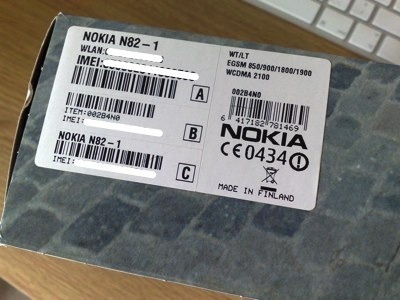IMEI (International Mobile Equipment Identity)
Each GSM and UMTS mobile phone has a unique IMEI (International Mobile Equipment Identity) number. An IMEI number facilitates an important function – it easily identifies a mobile phone being used on a GSM (Global System for Mobile Communications) network. The IMEI is a useful tool to stop a stolen phone from accessing a network being used. Mobile phone owners whose phones have been stolen can contact their mobile network provider and ask them to ban or shut off a phone using its IMEI number. With an IMEI number, the phone can be banned from the network quickly and easily. It is important to note that swapping a SIM card will not stop a phone from being banned.
An IMEI device is only used to identify the device and does not usually relate to a specific individual or organization. Other numbers such as ESN (Electronic Serial Numbers) and MEID (Mobile Equipment Identifiers) can link an individual to a phone. Usually, an IMSI number stored on a SIM card can identify the subscriber on a network.
There are a few ways in which a mobile phone’s IMEI number can be located, it can usually be found on the handset, beneath the battery, sometimes printed on a small white label. Another way to easily locate an IMEI phone is to dial the following sequence of numbers into the handset: *#06#. A Sony Ericsson mobile phone user can retrieve the IMEI by pressing the following key sequence: right,*, left, left,*, left, *, left.

The Structure of an IMEI Number
IMEI numbers either come in a 15 or 17 digit sequence of numbers. These numbers can identify a handset. Currently, the IMEI’s format is AA-BBBBBB-CCCCCC-D.
- These two digits are for the Reporting Body Identifier, indicating the GSMA approved group that allocated the TAC (Type Allocation Code).
- BBBBBB – The Remainder of the TAC
- CCCCCC – Serial Sequence of the Model
- D- Luhn Check Digit of the entire model or 0 (This is an algorithm that validates the ID number)
Central Equipment Identity Register (CEIR)
If a mobile handset is lost or stolen, the device’s owner/operator can contact the CEIR, which will blacklist the device in all currently operating switches. This makes the lost or stolen handset unusable. Blacklisting stolen mobile handsets is seen as a deterrent to crime. However, it is possible to change an IMEI with special tools and there are certain mobile networks that do not automatically blacklist handsets registered with the CEIR. Current statistics state that about 10% of current IMEIs in use today are not unique or have been reprogrammed (hacked).
CEIR Handset Classifications
ColorMeaning
White Valid Mobile Station Grey Mobile Station to be tracked Black Barred Mobile Station
Portions of this FAQ answer are taken from What is an IMEI?, part of the GSM Security FAQ.


Comments - 24 Responses to “IMEI (International Mobile Equipment Identity)”
Sorry but comments are closed at this time.